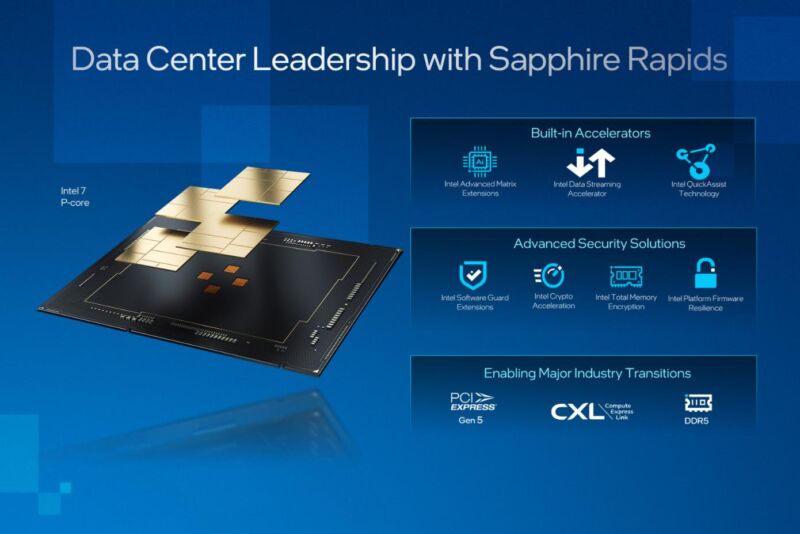
reader comments
38 with 19 posters participating
Intel’s next-generation Xeon CPUs based on the new Sapphire Rapids architecture have been delayed more than once, but Intel is finally gearing up to begin selling them to PC companies and end users. According to an announcement-about-an-announcement tweet from Intel, a “data center launch event” on January 10 will include Sapphire Rapids processors, and the chips have currently “met product release qualifications and the company is starting to ramp-up deployment.”
Also called “Xeon Scalable” or 4th-generation Xeon, Sapphire Rapids CPUs were originally slated for release in late 2021, but by mid-2021, that had become the first quarter of 2022, then “later in the year than originally forecasted,” and now early 2023. We still don’t know when the chips will actually begin shipping, only that we’ll be getting more information in January. These kinds of delays are relatively common for Intel, which also struggled to release its Arc-dedicated desktop GPUs on time and has suffered repeated manufacturing setbacks in the last decade.
In an interview with The Verge last month, Intel CEO Pat Gelsinger talked about the Sapphire Rapids delays, tacitly blaming them on previous leadership and indicating that future products wouldn’t have the same bumpy rollout.
“That project was started five years ago, so it’s in-flight. I can’t just reset the methodology of a product that began five years ago,” said Gelsinger. “[Sapphire Rapids] had way too much complexity in it, with three major new systems, or interfaces, in that design… and there were no backups on any of them.”
Sapphire Rapids is a distant relative to the Alder Lake (12th-generation) Core processors that have been shipping in laptops and desktops for a year or so now, built using “Golden Cove”-based CPU cores (unlike Alder Lake, Sapphire Rapids uses no low-power efficiency cores) and the same Intel 7 manufacturing process. We can reportedly expect as many as 60 cores for the data center versions of the CPU and up to 56 cores for the workstation versions, at TDPs of up to 350 W. But Intel’s delays have made the chips less competitive than they would have been if they had launched earlier this year. AMD’s next-generation Epyc CPUs for servers (codenamed Genoa) will offer as many as 96 Zen 4 cores per CPU when they launch later this month, while current-generation Threadripper CPUs already top out at 64 cores.
will also be supported by AMD’s Genoa. (These were the “three major new systems” Gelsinger was referring to in his interview.)
Architecturally, one of the most notable things about the chip is that it’s Intel’s first foray into chiplet-based CPUs—each processor actually consists of multiple silicon dies, linked together with a high-speed interconnect. AMD has used a chiplet-based approach for all of its Ryzen, Threadripper, and Epyc processors, and it can be a way to improve manufacturing yields; if there’s a fatal defect in a chiplet die, you have to throw out a whole lot less silicon than you do for a similar defect in one huge monolithic processor die. It also allows for mixing and matching of manufacturing processes, so you can use a cutting-edge process for the things that will benefit most from it (CPU and GPU cores, for example) while using a cheaper, more mature process for other things (I/O and other chipset functions).
Intel will be leaning even more heavily on chiplets beginning with its 14th-generation “Meteor Lake” processors, which will combine a mix of “tiles” built using different manufacturing processes together into a single processor.






